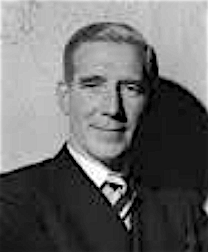
Arnold Silcock was born on Bath, England, on 13 October 1889. He was articled to his father, Thomas Ball Silcock (1854-1924) and Samuel Sebastian Reay (c.1867-1933) in Bath from 1908 to 1911. He also attended Bath School of Art and the Architectural Association Schools in London. He worked as an assistant to John William Simpson (1858-1933) and Maxwell Ormond Ayrton (1874-1960) of Simpson & Ayrton; to Septemus Warwick (1881-1953) and Herbert Austen Hall (1881-1968) of Warwick & Hall; and to Robert Atkinson (1883-1952). He qualified as an architect in 1914 and was elected an Associate of the Royal Institute of British Architects (ARIBA) later that year.
In 1921 he formed a brief partnership with his father. From 1921 and 1925 he worked as an architect in China. He practised alone in London from 1926. He was elected a Fellow of the Royal Institute of British Architects FRIBA) in 1927.
During World War One he served in the Artists Rifles. He died in Jersey, Channel Islands, in July 1953. He was the author books on Chinese art and architecture and with Maxwell Ayrton, was co-author of Wrought Iron and its Decorative Use (Country Life, 1929). He died in Jersey, Channel Islands, in July 1953.
Directory of British Architects 1834-1914. Compiled by Antonia Brodie, et al. Volume 2: L-Z. London; New York: British Architectural Library, Royal Institute of British Architects/Continuum, 2001
‘Obituary’. The Builder vol. 185, 10 July 1953 p. 68